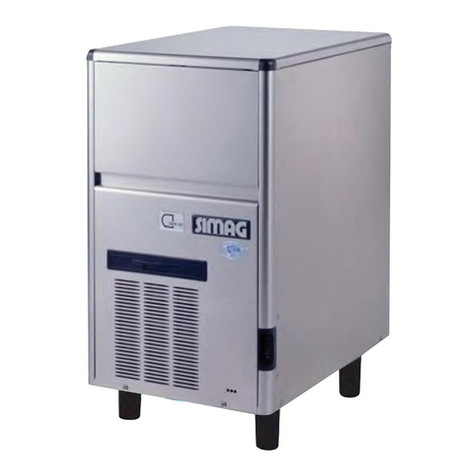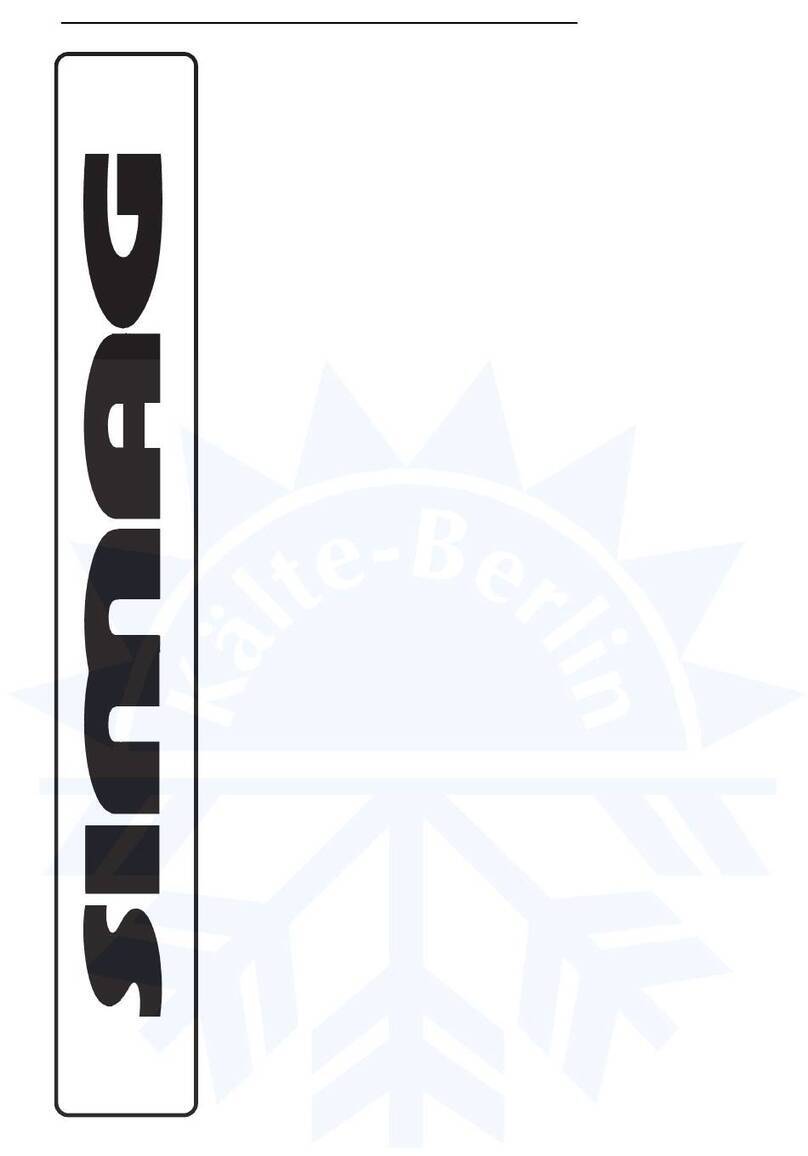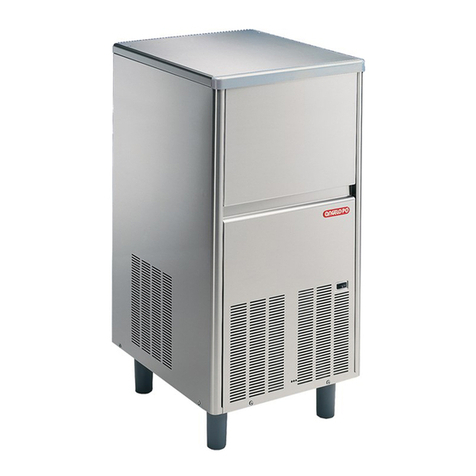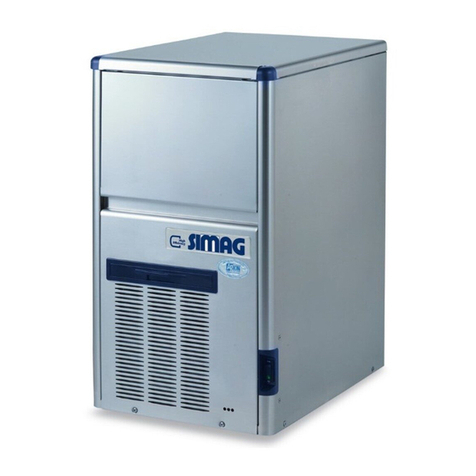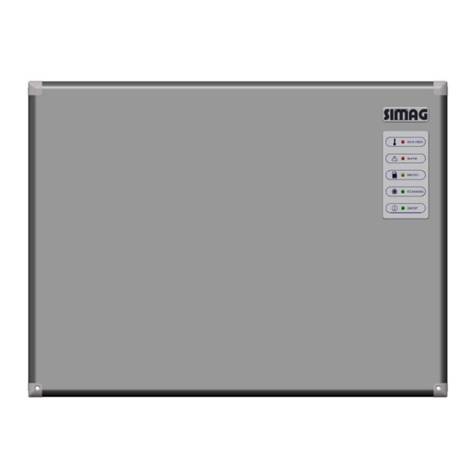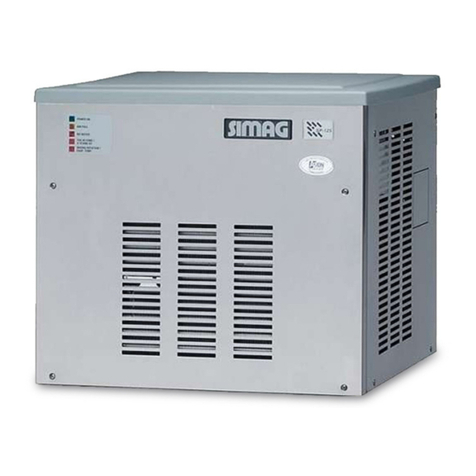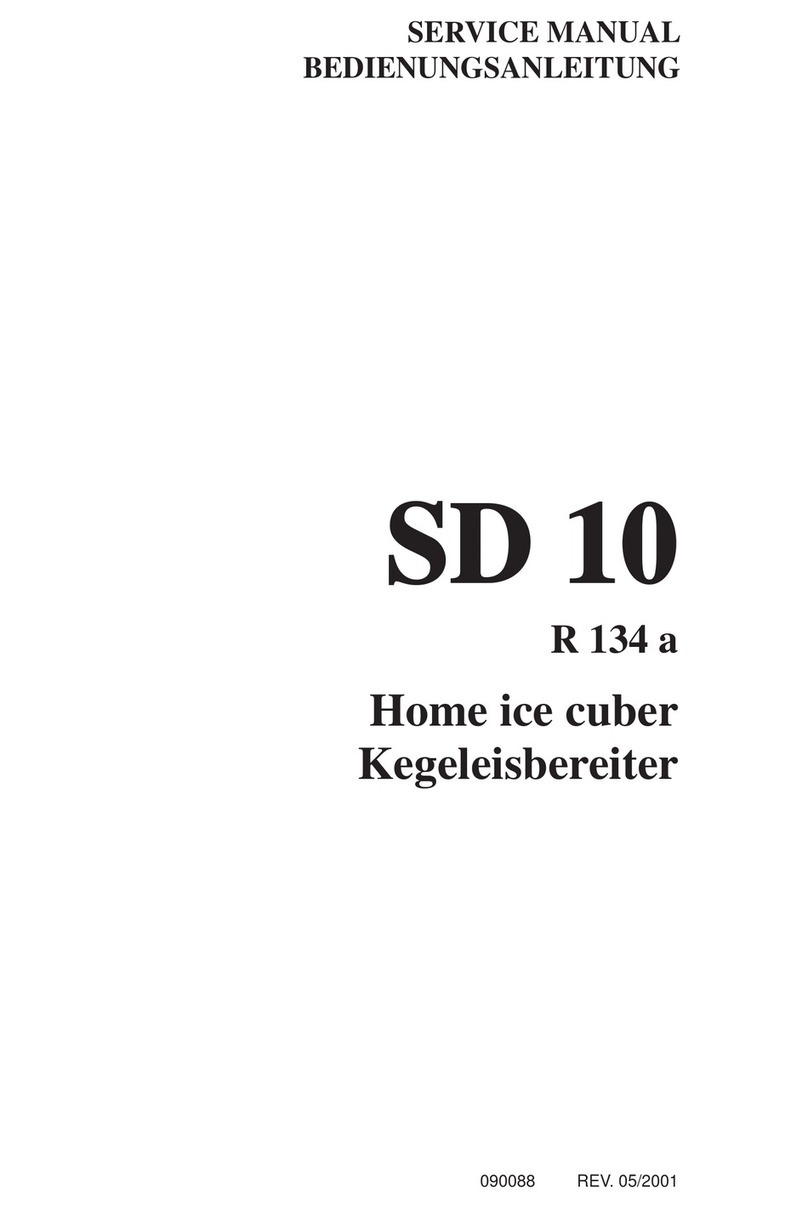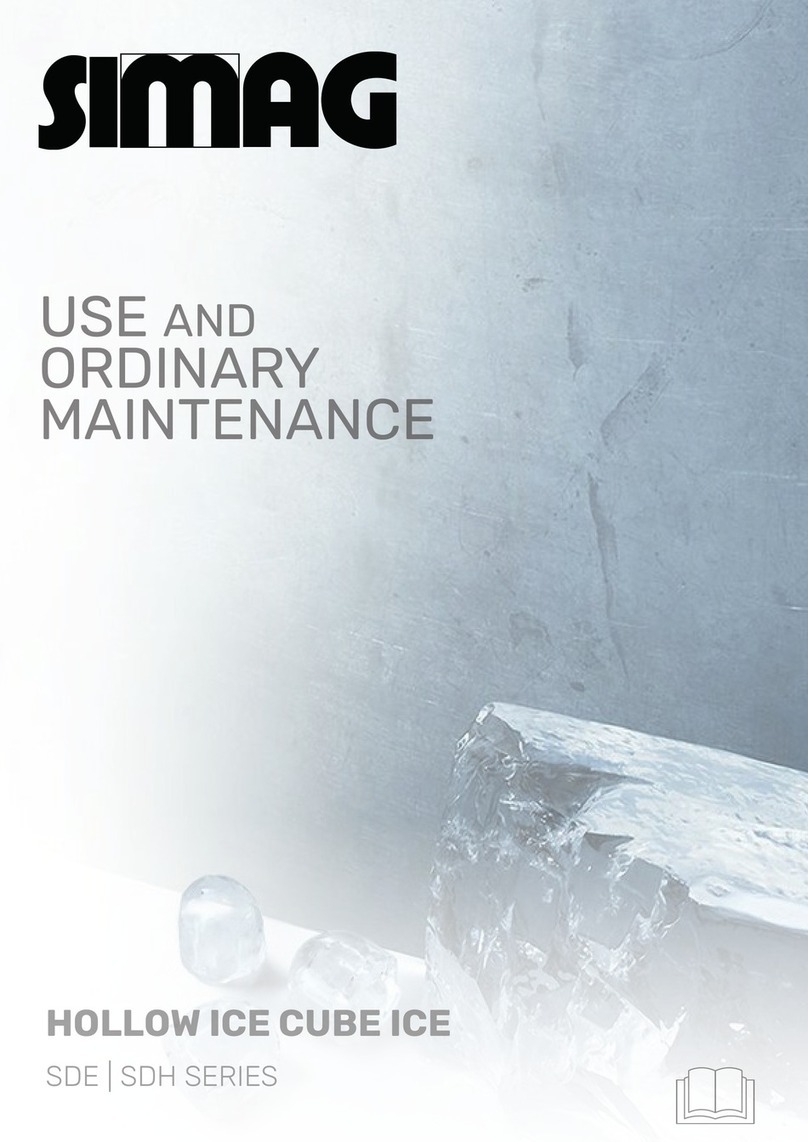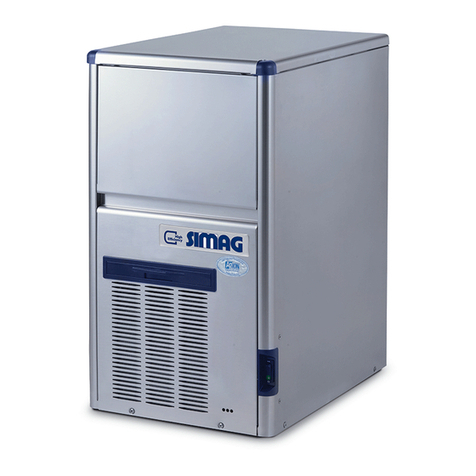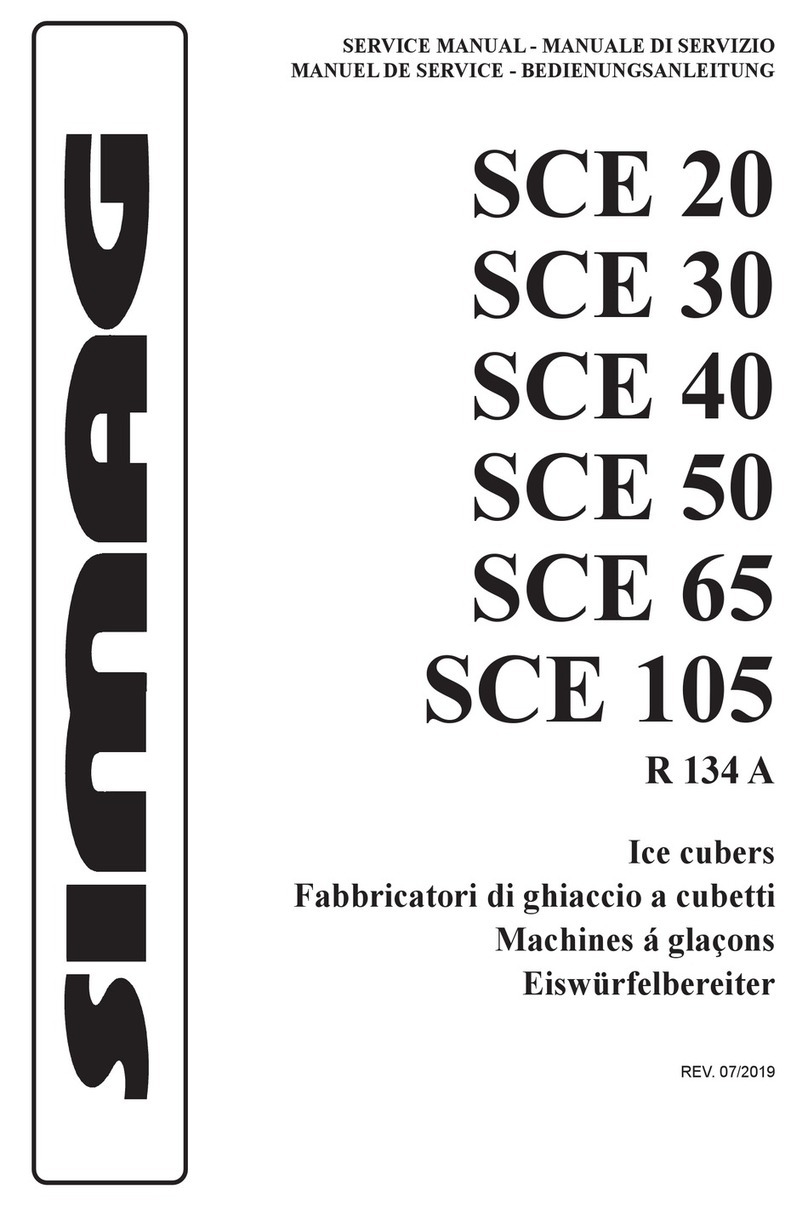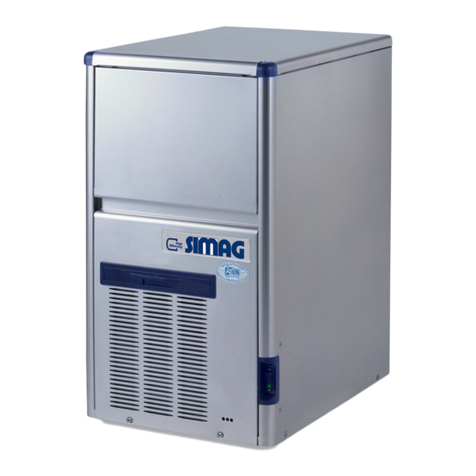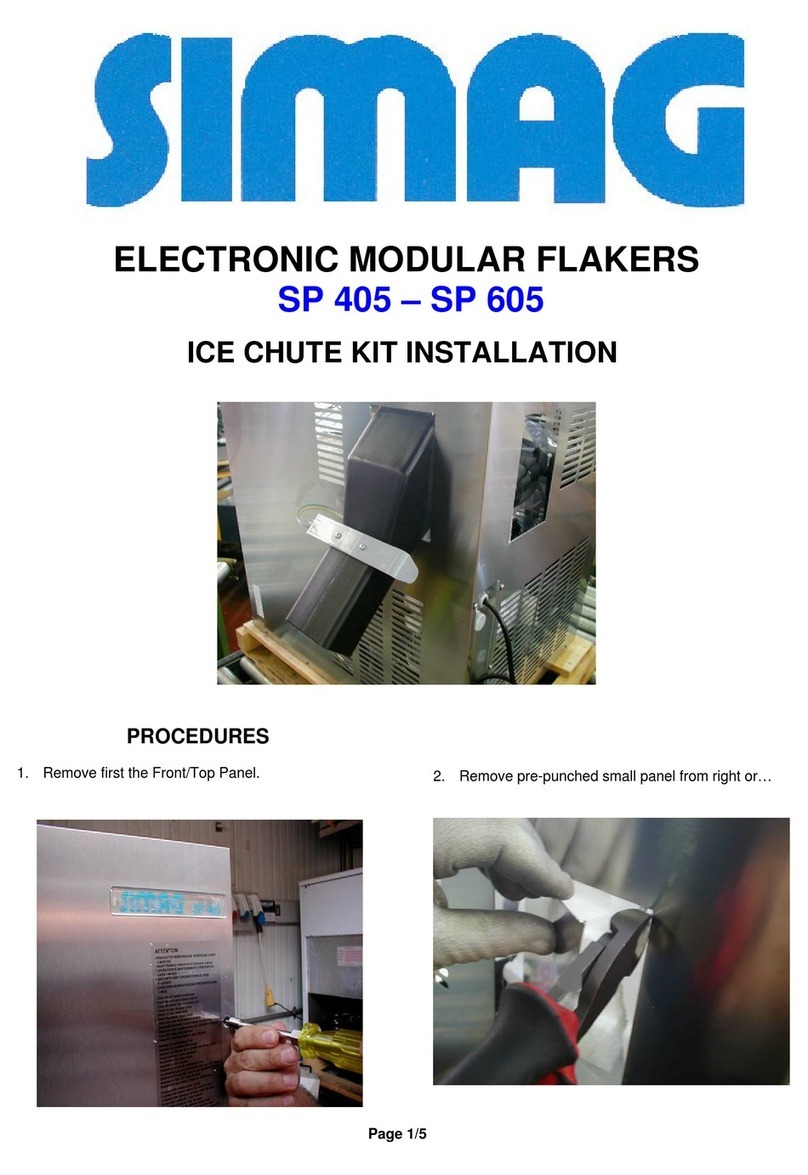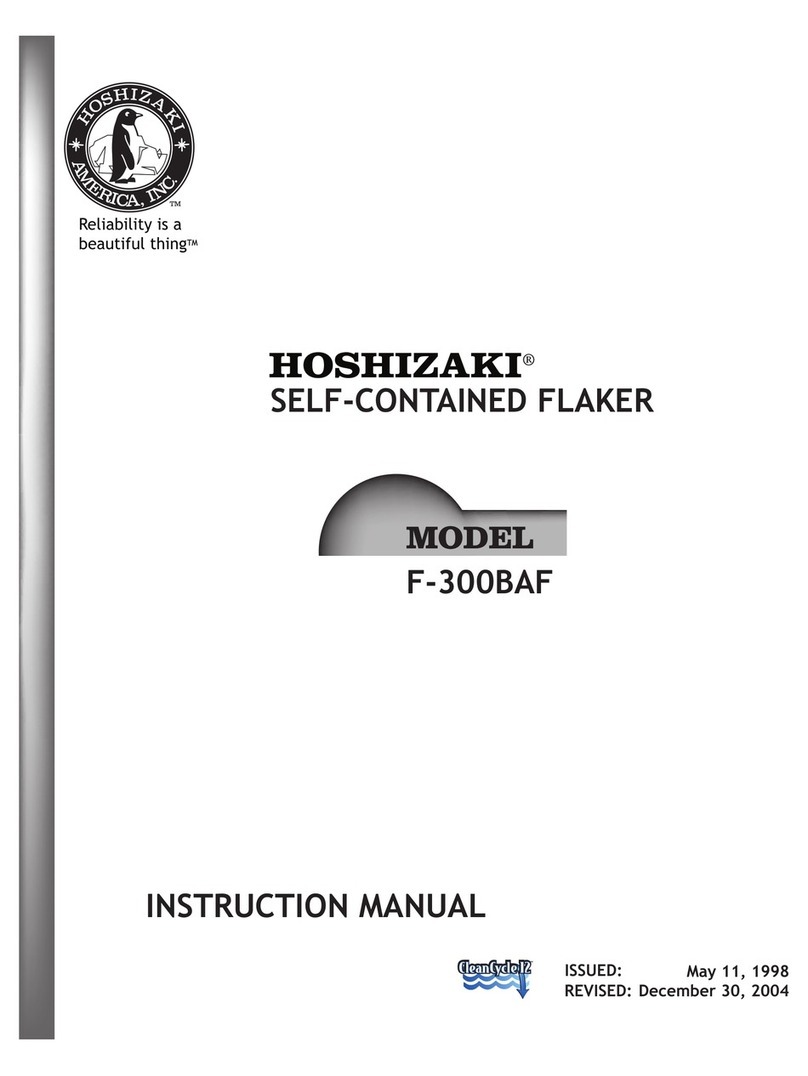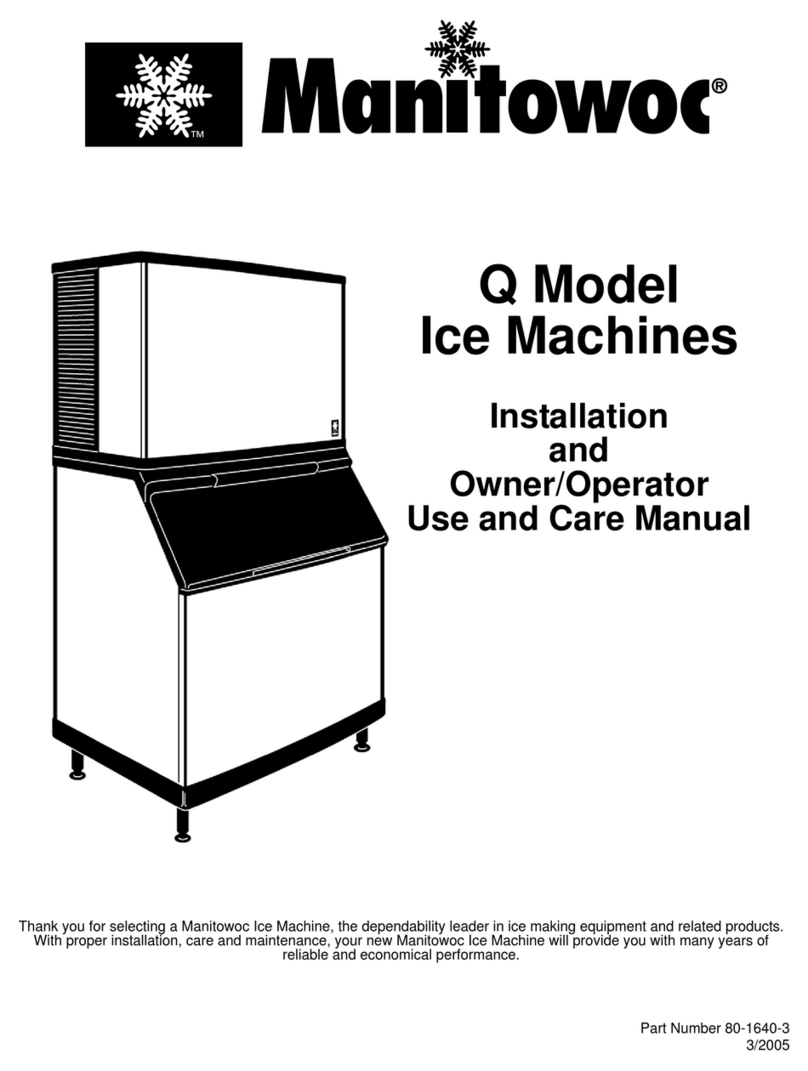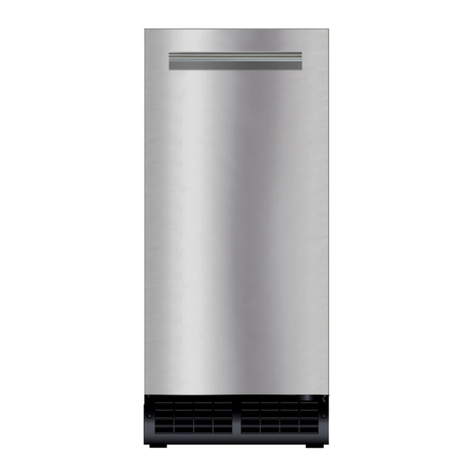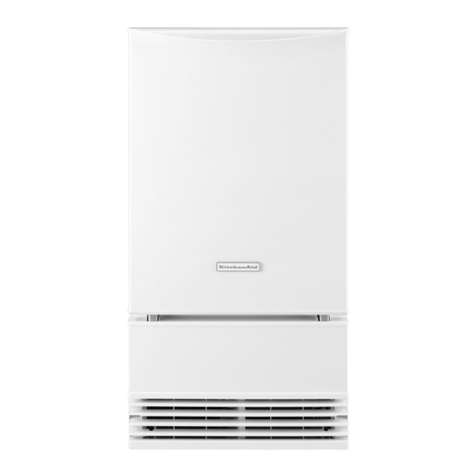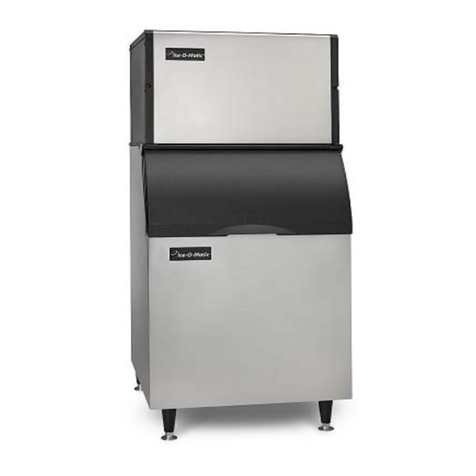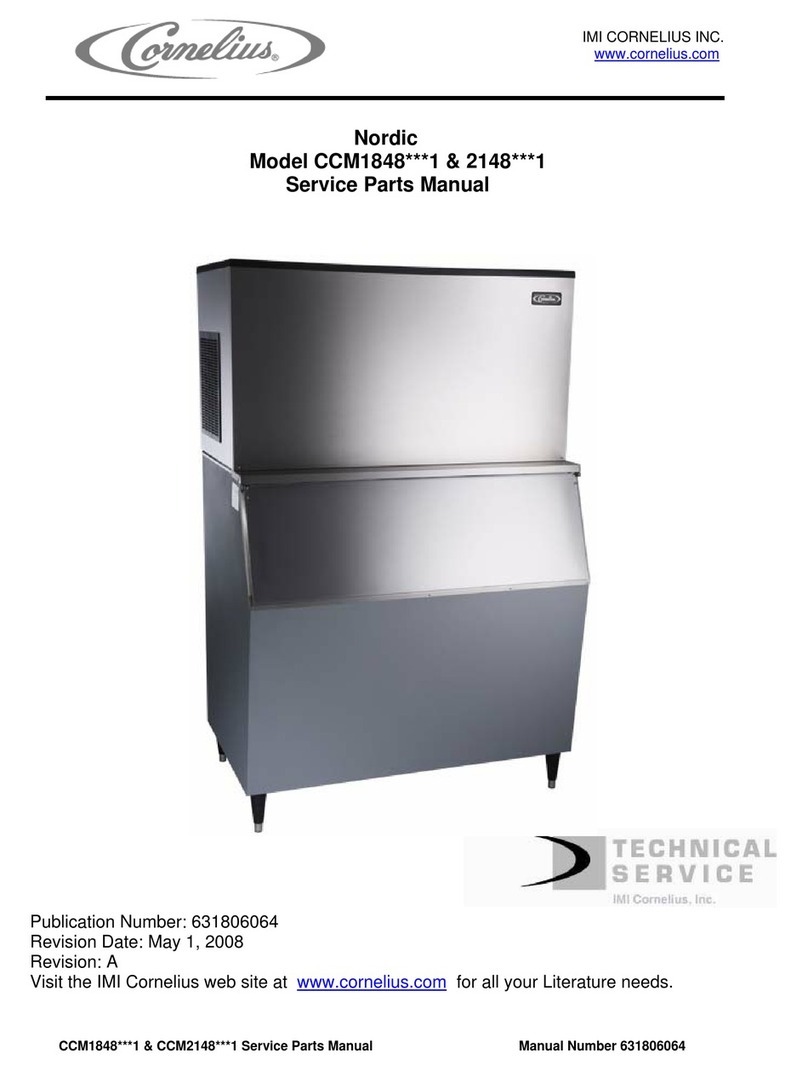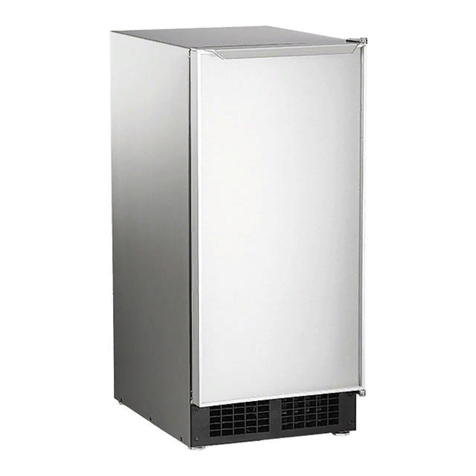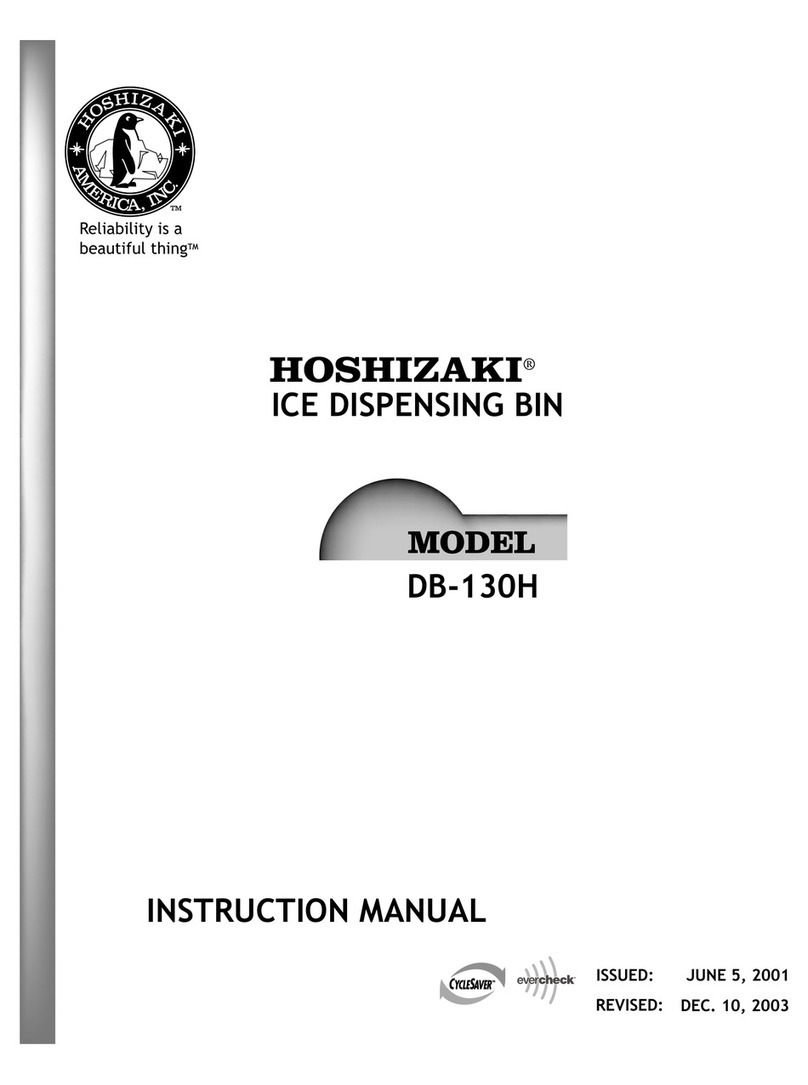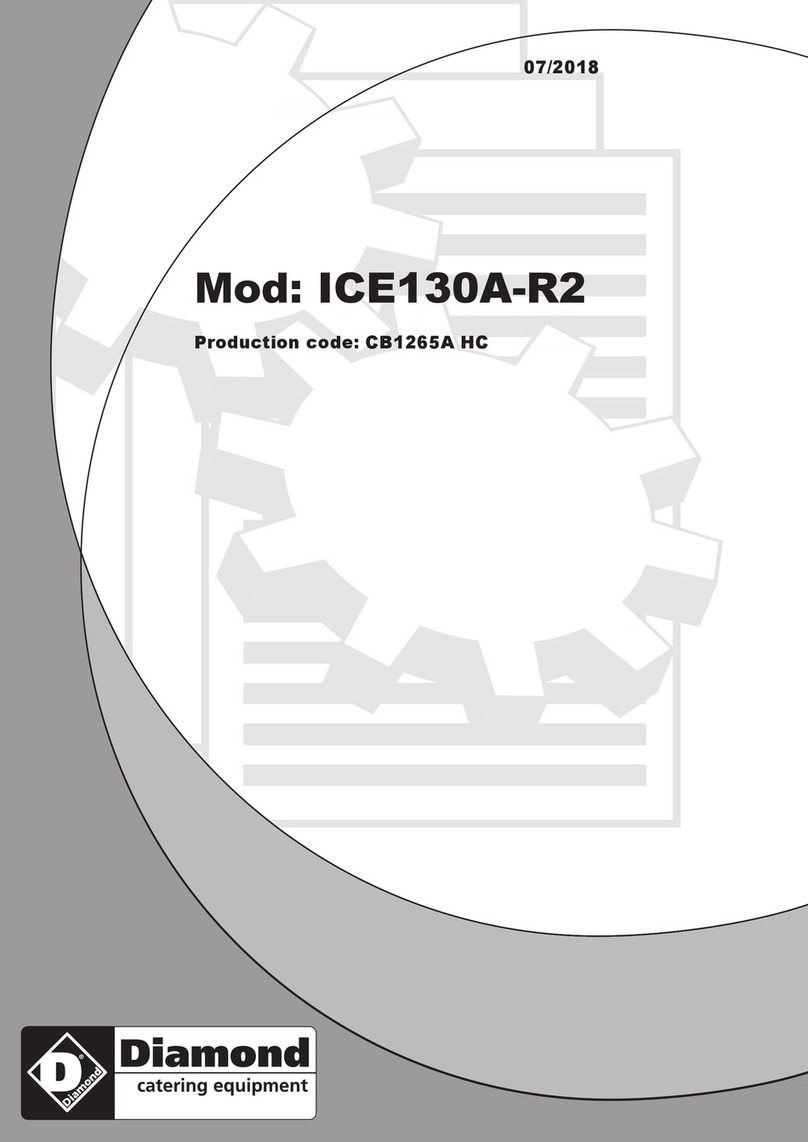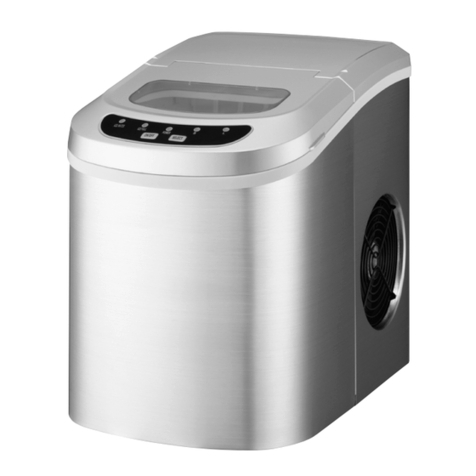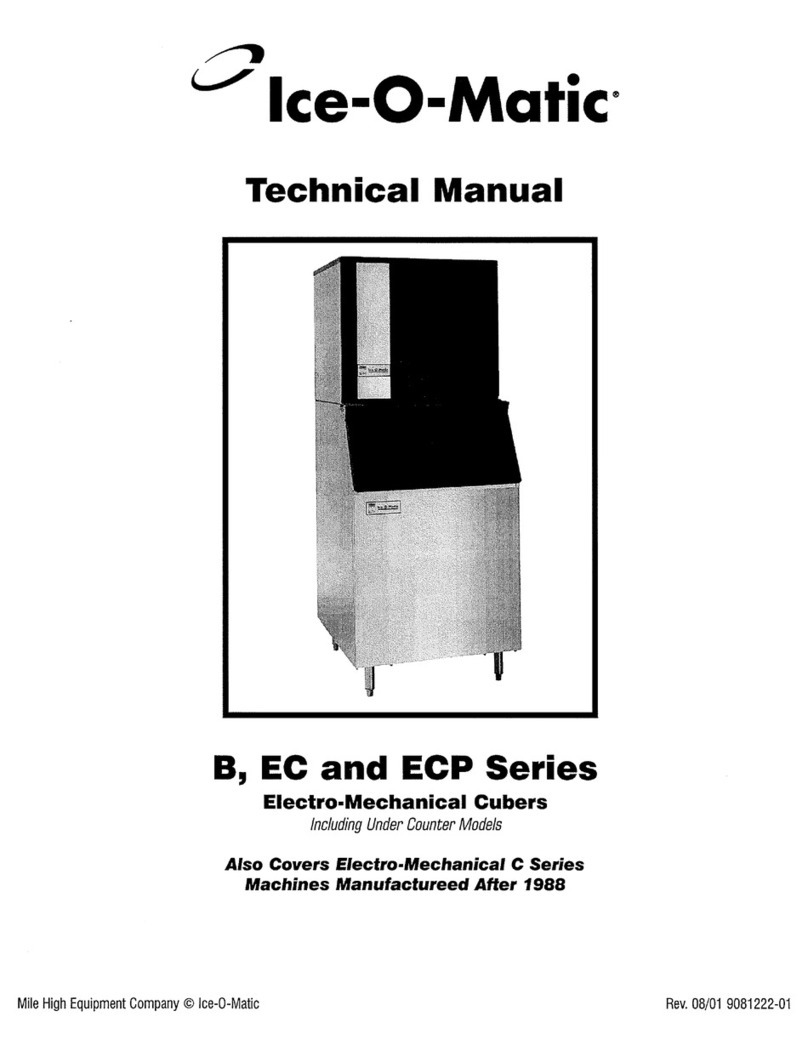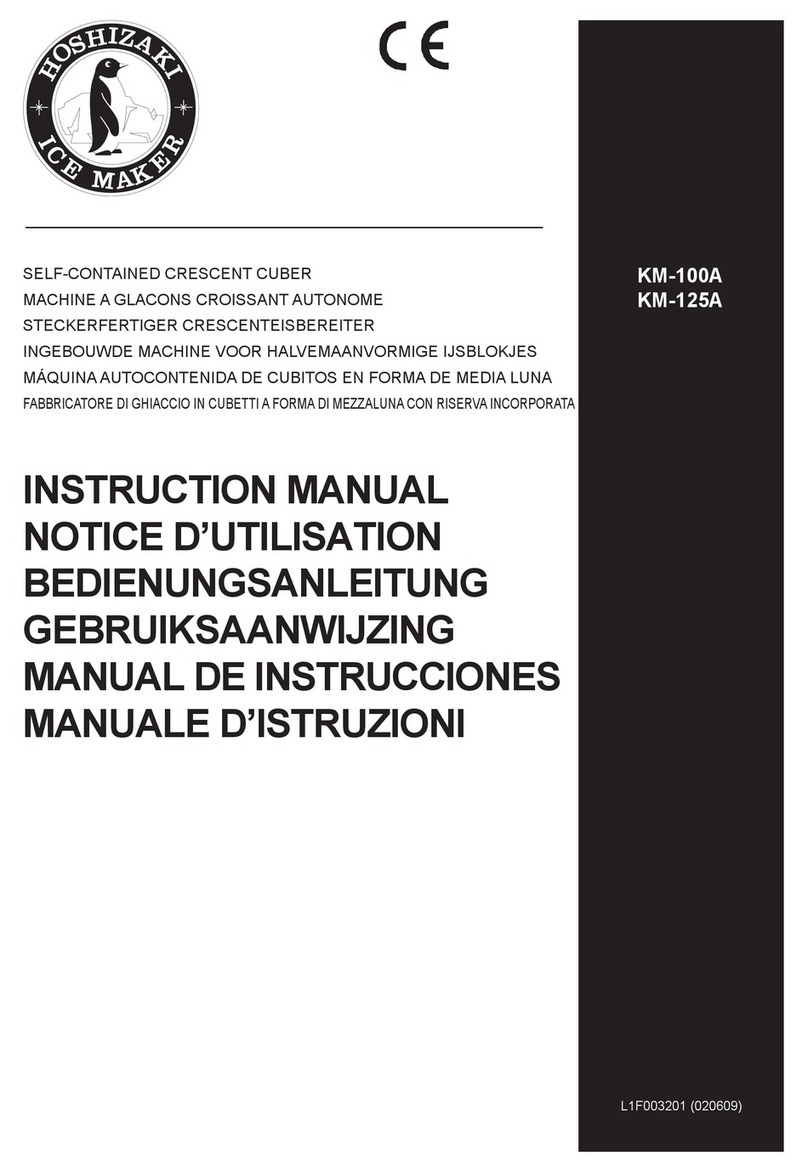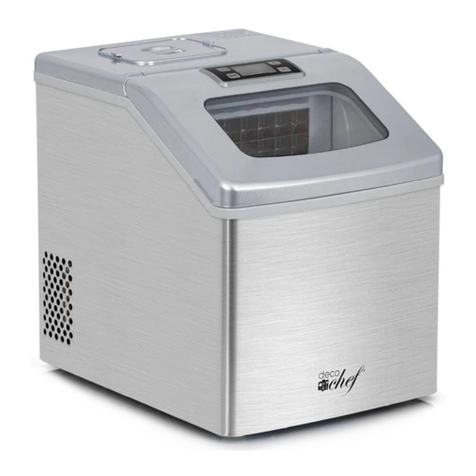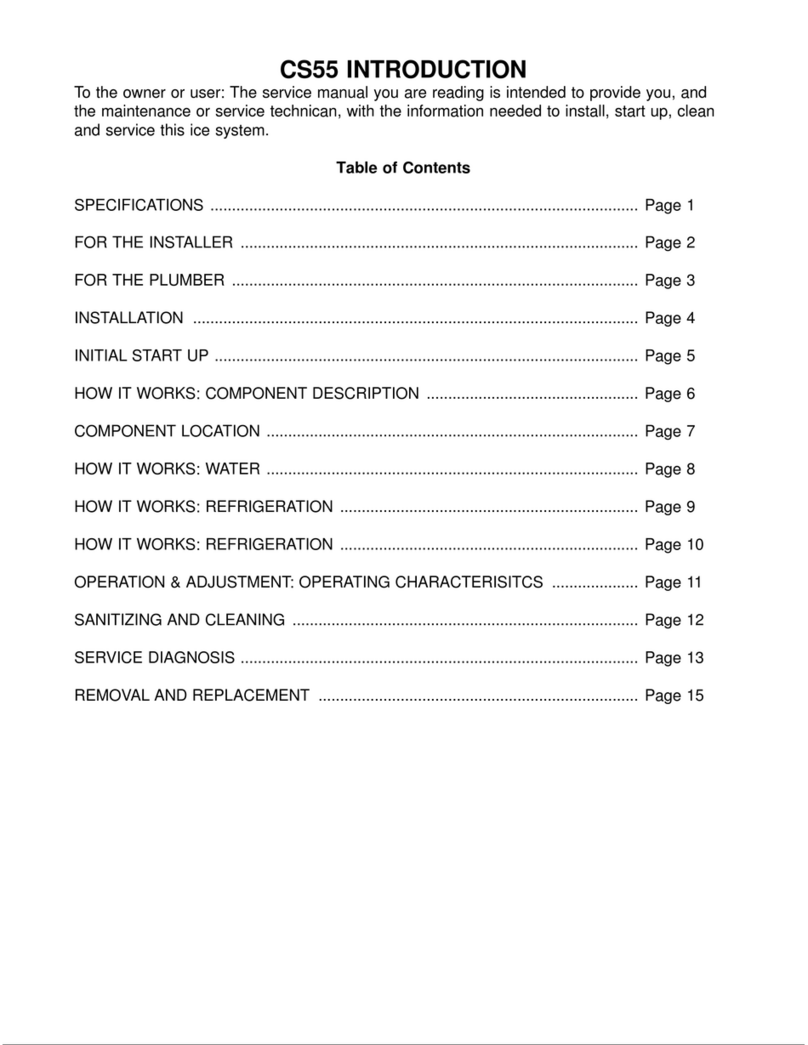SIMAG SPN User guide

FLAKERS
SPN | SPR | SNM | SMI
USE AND
ORDINARY
MAINTENANCE

ISO 9001 - Cert. n. 0080
LANGUAGE
BRAND
DRAWINGS
PHOTO
Set language
Layers
LANGUAGE
BRAND
DRAWINGS
PHOTO
Set language
Dear Customer,
this manual contains all the information necessary for the use and routine maintenance of
the product.
We therefore recommend that you read it carefully before use and keep it carefully for
future reference.
If any step is not understood well, the Manufacturer remains available to provide any
information.
This booklet in digital format is interactive; for example, a simple "click"
of the mouse on the writings or on the page numbers gives direct
access to the contents indicated.
If you need to print the booklet, it is advisable to deactivate the
“Photo” level from the Acrobat menu.
Drawings and texts will be printed but the background photos will be
hidden: in this way it will be possible to save a lot of printing ink and,
consequently, protect the environment!

Safety page 4
Knowing the appliance page 8
Using the appliance page 11
Cleaning and maintenance of the appliance page 13
Service page 16
For any information, always state:
• product model
• serial number
• data in the purchase invoice

4
SAFETY
Pictogram explanation
Indicates that caution is required when
performing an operation described in a
paragraph that bears this symbol. The
symbol also indicates that maximum
operator awareness is required in order to
avoid unwanted or dangerous consequences
Indicates important information to be read
and complied with.
Indicates requirements relating to actions
that must be avoided.
This symbol placed on the appliance or used
in the manual identifies the areas with an
electrical hazard.
Indicates grounding
Indicates that it is necessary to read
carefully the paragraph marked with
this symbol before installing, using and
maintaining the product
Safety warnings
WHO IS THIS MANUAL FOR?
The pages identified with this symbol are mainly
addressed to the user, who must read them carefully
before use and routine maintenance (cleaning) of
the appliance. If you have not understood the whole
content of the manual, contact your local distributor or
Dealer before working on the appliance.
Given the continuous progress in the design sector, the
Manufacturer reserves the right to make changes to
the production and instructions, without this entailing
the obligation to update the production and previous
instructions. If necessary, further copies or updates
of these instructions must be requested from the
Manufacturer.
INTENDED USE AND CLASSIFICATION
This appliance is an ice maker and must only be used
for making ice (not as a container for bottles, cans, etc.)
The appliance is designed to be used in
domestic and similar applications such as:
• kitchen area for staff in shops, offices and
other work environments;
• farms and by customers in hotels, motels
and other residential-type environments;
• bed and breakfasts;
• catering services and similar applications,
not for retail.
OPERATING LIMITS
Minimum Maximum
Ambient working temperature
10°C 43°C
Water temperature 5°C 38°C
Water pressure 0.1 MPa
1 Bar
0.5 Mpa
5 Bar
Voltage tolerance with
respect to the data
indicated on the plate
-10% +10%
Sound level produced
by the operation of the
appliance
< 70 dB(A)
GENERAL WARNINGS
Partial or total non-compliance with
these instructions and following
prescriptions, improper installation, use,
ordinary or extraordinary maintenance or
other than those indicated in the manual or
the tampering with or modification of the
appliance or some of its parts (unless
expressly authorized), use of non-original or
non-specific spare parts for the model,
unauthorized interventions:
• can cause damage, injury or death;
• void the warranty
• reduce or compromise the quality and
safety characteristics of the appliance;
• release the Manufacturer from any liability.
It is absolutely forbidden to tamper with
or remove the safety devices adopted
(protective grids, danger stickers, etc.). The
Manufacturer declines all responsibility if the
above instructions are not complied with.
Use or routine maintenance (cleaning)
other than those mentioned in the
Manual may cause damage, injury or fatal
accidents.
This appliance can be used by children
aged 8 and over and by people with
reduced physical, sensory or mental abilities
or with a lack of experience and knowledge
only if they have been adequately instructed
and supervised in the safe use of the
appliance and have learned the possible
dangers derived from its use. Children must
be supervised to make sure they do not play
with the appliance.

5
If the power cable is damaged, have it
replaced ONLY by QUALIFIED
PERSONNEL in order to prevent any risks.
Before carrying out any routine cleaning
or extraordinary maintenance, it is
necessary to disconnect the appliance from
the power supply, close the water tap and
wear suitable personal protective equipment
(e.g. gloves, etc.).
If the appliance does not work or
functional or structural alterations are
noted, disconnect it from the power and
water mains (if provided) and contact a
service centre authorised by the
Manufacturer without attempting to repair it
on your own. The use of original spare parts
is mandatory. The Manufacturer accepts no
liability for the use of non-original spare
parts.
If the appliance is being repaired,
highlight with appropriate signs placed in
a visible position that it CANNOT be used.
Do not place objects that cause poor
ventilation on and around the appliance.
In particular, make sure that the front and/or
side ventilation openings are always free
from obstructions.
Do not store explosive substances in this
appliance, such as aerosol cans with
flammable propellant.
Do not use electrical devices inside the
application container, unless they are of
the type recommended by the Manufacturer.
Do not place any solid or liquid object on
top of the appliance and do not use it as
an anchor.
Do not sit on top of the appliance.
Do not work on the appliance with wet
hands or bare feet.
For small movements of the appliance, it
must always be lifted. NEVER push or
drag it.
The rating plate provides important
technical information that is vital in case
of a request for maintenance or repair of the
appliance: please do not remove, damage or
modify it.
To ensure the best conditions of use and
safety of the appliance, once or twice a
year (or according to the provisions of the
national regulations in force) contact the
Dealer or the local distributor to have the
appliance checked so that it undergoes
extraordinary maintenance (washing,
descaling and sanitizing the water circuit
and replacing the XSafe lamp - if any).
The Manufacturer’s warranty does not cover
oxidation due to installations in marine
environments or in the presence of salt.
The state of appliance stopped, detected
by means of a visual inspection of the
same, does not guarantee with certainty
that the device is turned off. In order to
protect his own safety, the operator must
check that the appliance is not live, i.e. that
its plug is disconnected or that the switch on
the panel to which it is connected is in the
"OFF" position.
This manual is an integral part of the
appliance and must accompany it
throughout its useful life. Store the manual
carefully, in a dry and accessible place, near
the location of the device for any further
future consultation by the various operators
when they need it.
The appliance must be easily moved for
any extraordinary maintenance: pay
attention that any masonry work subsequent
to installation (e.g. construction of walls,
replacement of doors with narrower ones,
renovations, etc.) do not hinder movement.
Caution! Do not install the appliance on
containers with an area smaller than the
base of the appliance.
When cleaning any part or accessory do
NOT use:
• abrasive or powder detergents;
• aggressive or corrosive detergents (for
example hydrochloric or sulphuric acid,
caustic soda, etc.). Caution! Never use
these substances also when cleaning the
floor under the appliance;
• abrasive or sharp tools (for example abrasive
sponges, scrapers, steel brushes, etc.);
• steamed or pressurised water jets.

6
INSTALLATION INSTRUCTIONS
Installation must be performed by
authorized technicians.
When installing the appliance, replace
the existing water supply tubes with the
new ones supplied with it.
Place the water drain hose(s) supplied in
the relative drain.
Attention, use only drinking water.
The water supply tap must be within
reach of the operator.
The installation of a softener filter for the
water connection is recommended. For
the installation, contact your local official
distributor.
Before installation and periodically
during use, check that the power cable
is not torn or damaged.
If the power cable is damaged, have it
replaced ONLY by QUALIFIED
PERSONNEL in order to prevent any risks.
It is mandatory to connect the appliance
to a wall switch installed on the power
line.
Do not place multiple sockets or portable
sockets behind the application.
The main switch and/or the electrical
outlet must be close to the appliance
and within reach of the operator.
During the installation, check that:
- the socket of the power supply line is
earthed.
- the contact opening distance allows
complete disconnection in the conditions
of category III overvoltage. Disconnec-
tion devices must be incorporated into
the power supply in compliance with the
installation rules.
- the appliance has a minimum distance of
150 mm from the walls to allow sufficient
ventilation;
- the appliance is perfectly level.
REFRIGERANT GAS SAFETY WARNINGS
Propane is a highly flammable gas.
The appliance contains fluorinated
greenhouse gases governed by the
Kyoto protocol, in the quantities indicated on
the serial plate.
The GWP (Global Warming Potential) of:
• HFC R404A is 3750;
• HFC R452A is 2140;
• HFC RE134A is 1430;
• R290 is 3.
The propane used in refrigeration systems
is odourless and heavier than air; in case of
refrigerant leaks it migrates to the ground.
The system is hermetically sealed.

7

8
Before using the appliance it is good to know it thoroughly. This appliance is an ice maker and must only be used to
make ice (not as a container for bottles, cans, etc.)
F01 This booklet explains the operation of two dierent devices; to identify the purchased model, look for its
name on the serial plate, located on the back of the appliance ("model" eld).
F02 SNM | SPN series models should be installed on top of a separate ice bin; an outlet kit is available as an
option to be able to unload onto a conveyor belt or a low container on wheels placed on the side or rear.
F02 SMI | SPR series models have an ice container built into the appliance.
To avoid possible cold injuries, remove the granular ice using scoop “D” (supplied with the models with
built-in ice container) and PPE devices, such as gloves (not supplied).
Never obstruct the front and side ventilation slots "C", they are used to ensure the good operation of the internal
cooling unit.
KNOWING THE APPLIANCE

9
F01
F02
Serial number XX 123456
x A
CI. T
Type
IP xx Rxxx x,xx kg x,xxx t Co2eq.
2103
xx Hz xxx W xx A
230 V ~
ABC 123 AS 230/50/1 Rxxx
C
BB
A
A
C
C
C
D
SMI | SPR series
Granular ice maker
with built-in ice container
SNM | SPN series
Granular ice maker
without built-in ice container
KEY
A Ice container door
BWarning lights (see page 10 for further explanations)
CFront and side air vents
DScoop (supplied with models with built-in ice container)
Current intensity
Frequency
Degree of protection
Climate class
Coolant data
Supply voltage
Supply fuse
Maximum power
Certications
Production date
for instance 2103
21: year | 2021
03: month | March
Manufacturer Logo
and company name
MODEL
SERIAL NUMBER

10
F03
KNOWING THE BUTTONS AND LIGHTS
F03 Indicator lights “B” give useful information on the status of the machine.
Powered appliance warning light
If on, it indicates that the appliance is electrically powered (plug inserted and the main switch of the room
system in the ON position).
Container full warning light
If on, it shows that the ice container is full: remove the granular ice.
Alarm warning light
If on, it indicates that the appliance is unable to load the water required for ice production: make sure that
the water supply tap is open, that the water supply hose is not disconnected, damaged or pinched and
that there is no interruption of the water supply. If the problem persists, contact Technical Service.
Alarm warning light
If on STEADY, it highlights an alarm due to the cooling condenser excessive temperature.
If on FLASHING: the device is equipped with a delay device so it starts working after 3 or 60 minutes
(depending on the model) from powering it up; during these minutes the LED ashes to indicate waiting.
Alarm warning light
If on STEADY, it indicates an alarm due to the incorrect rotation or speed of the auger; it is necessary to
contact Technical Service.
If on FLASHING, it highlights an alarm due to the evaporator excessive temperature; it is necessary to
contact Technical Service.

11
F04
2
3
ON
ON
1
This appliance can be used by children aged 8 and over and by people with reduced physical, sensory or mental
abilities or with a lack of experience and knowledge only if they have been adequately instructed and supervised in
the safe use of the appliance and have learned the possible dangers derived from its use.
F04 Starting the appliance
1Power the appliance inserting its plug into a socket with adequate capacity and turning the switch that
powers the socket to ON or, if the appliance has been connected to an electrical panel, set the main switch of
the panel to ON: the appliance is now powered up. The green lamp light “appliance powered” turns on.
2Open the water supply tap so that it can be lled from the appliance.
F04 Ice production start
3The appliance starts loading water automatically. Once lling has been completed, the appliance waits for a
delay at the start of 3 or 60 minutes (depending on the model) before starting ice production.
USING THE APPLIANCE
only for machines with
water condensation
opening the water supply tap
water loading delay to start
of 3/60 minutes (depending
on the model)
depending on the models, inserting
the appliance plug or turning on
the main switch of the dedicated
panel: now the appliance is powered

12
A
B
C
F05
F05 After a few minutes the rst ice will be released which can then be removed from the container using the scoop
provided. Then, more ice will be released, until the container is lled, without the need to press any button.
To avoid overlling the built-in container and possible leakage of the ice, inside the container there is
a sensor that stops production if the maximum capacity level is exceeded; when the "container full"
light comes on, the ice container is full and ice production is temporarily interrupted. When the ice is
removed and the level is lowered, the "container full" light goes o and the appliance automatically
resumes production without the operator needing to intervene in any way.
After removing the ice, the scoop must be placed inside the collection container on the appropriate support (if any);
to avoid contamination of the ice, use only the scoop provided and sanitize it frequently.
F04 Ice production stop
4To stop production, pull the plug or turn OFF the switch that powers the socket or the electrical panel to which
the appliance is connected.
Turning the appliance o
To turn the appliance o, for example to carry out cleaning or at the end of the working day, unplug the appliance or
turn o the switch that powers the socket or the electrical panel to which the appliance is connected.
SMI | SPR series
These ice makers have
a built-in ice container:
door “A” must be lifted to
remove the ice.
If ice is not being
removed, the ice
container door must be
kept closed.
water supply tap
water loading for cooling (only for machines with water
condensation)
water loading for ice
production
ice container door “A”
depending on the model
there may be a plug
Aand a switch Bto
disconnect it if it is in a
dicult position or an
electrical panel C

13
F06 F07
INOX
1 ml
+
+
1 l
H2O
C
US
O
P
RO
F
ESS
I
O
N
ALE
SOLUZIONE
Clorossidante elettrolitico
DISINFETTANTE
CONCENTRATA
Ordinary cleaning
Before carrying out any ordinary or
extraordinary maintenance, it is
necessary to disconnect the appliance from
the power supply, close the water supply tap
and wear appropriate personal protective
equipment (e.g. gloves, etc.).
Ordinary cleaning is intended to keep the appliance in
good operating condition and prevent the proliferation of
bacteria.
To clean any component or accessory DO NOT use:
• abrasive or powder detergents;
• aggressive or corrosive detergents (for example
hydrochloric or sulphuric acid, caustic soda, etc.).
Caution! Never use these substances also when
cleaning the floor under the appliance;
• abrasive or sharp tools (for example abrasive sponges,
scrapers, steel brushes, etc.);
• steamed or pressurised water jets.
The user must carry out only routine maintenance,
for any extraordinary maintenance, contact a Service
Centre requesting service from an authorised
technician. The cleaning of the appliance is reserved
only for suitable and capable personnel and must not be
carried out by children.
CLEANING AND MAINTENANCE OF THE APPLIANCE
DAILY
Clean the ice scoop with the manufacturer’s
disinfectant mixed with warm water (1 ml in 1 litre of
water, the dilution percentages are also indicated on
the rear label of the product). Finish rinsing and drying it
thoroughly.
MONTHLY
Clean the ice collection compartment with a soft
cloth soaked with the manufacturer’s disinfectant mixed
with warm water (1 ml in 1 litre of water, the dilution
percentages are also indicated on the rear label of the
product). Finish with a thorough rinsing.
Clean the external surfaces with a soft cloth
moistened with a specic product for stainless steel, free
of acid, aggressive or abrasive agents. For how to use it,
refer to the instructions provided by the manufacturer of
the chosen detergent.
The manufacturer’s
disinfectant is the
only one tested
and guaranteed to
thoroughly sanitize all
surfaces in contact
with the ice, in full
compliance with
the construction
materials.
Contact the ocial
local Manufacturer/
Distributor for any
purchase.

14
F07 Clean the front or side “C” air vents with a
soft bristle brush or vacuum cleaner.
Clean the control panel and the door with a soft cloth
slightly moistened with a neutral detergent suitable
for delicate surfaces. For how to use it, refer to the
instructions provided by the manufacturer of the chosen
detergent.
EVERY 6 MONTHS / 1 YEAR
Contact the ocial local Dealer/Distributor for washing,
descaling and sanitizing the water circuit.
EVERY YEAR
Contact your ocial local Dealer/Distributor for the
annual maintenance plan.
Proper and timely maintenance is essential to
ensure health safety and maintain excellent
performance of the appliance over time.
Downtime
During any downtime, switch the power and water o.
Before resuming operations:
• accurately clean the appliance and accessories (if
present);
• submit the appliance to the water circuit check and
cleaning;
• reconnect the appliance to the power and water
supply.
Extraordinary maintenance
Extraordinary maintenance, such as the replacement
of a faulty component, must only be performed by
qualied personnel authorized by the Manufacturer.
The Manufacturer accepts no liability and does not
recognize the warranty if the user independently carries
out or has unqualied personnel carry out extraordinary
maintenance.
End of life disposal
IT08020000000615
Implementing Directives 2011/65/EU and
2012/19/EU on the disposal of waste
electrical and electronic equipment.
The crossed-out bin symbol indicates that
the product at the end of its useful life must
be collected separately from other waste. The separate
collection of this appliance at the end of its life is
organized and managed by the manufacturer. The user
who wants to get rid of this appliance must then contact
the manufacturer and follow the system that he has
adopted to allow the separate collection of the appliance
that has reached the end of its life.
Adequate separate collection for the subsequent start-
up of the decommissioned appliance for recycling,
treatment and environmentally compatible disposal
helps to avoid possible negative eects on the
environment and health and favours the recycling of the
materials of which the appliance is made.
Illegal disposal of the product by the holder involves the
application of administrative penalties provided for by
the current legislation.

15
Problems and solutions
PROBLEM SOLUTION
The appliance does not
switch on
• Check that there is no black-out, that the main switch of the dedicated panel has
not blown and that the plug is correctly inserted in the socket.
If none of these solutions solves the problem, contact Technical Assistance.
The appliance makes
no ice or production is
limited.
• Make sure that the appliance is not near another very hot one (for instance an oven).
• Check that ambient temperatures do not exceed 43°C.
• Check that the water supply tap is open (see F04 on page 11).
• Check that front or side air vents “C” are not obstructed by objects or dust (see
F07 on page 13). Switch the appliance o and back on,
If none of these solutions solves the problem, contact Technical Assistance.
The appliance is very
noisy
• Check the appliance touches no other apparatus, object or machine.
• Check the appliance is perfectly level.
• Check that all visible screws are properly tightened.
If none of these solutions solves the problem, contact Technical Assistance.
The red alarm light
comes on
If it is on STEADY:
• It indicates an alarm due to excessive temperature of the cooling condenser: check
that the appliance is not close to another very hot one (for instance oven) or that the
ambient temperatures do not exceed 43°C.
• Check that the inlet water pressure is between 1 Bar and 5 Bar.
If on FLASHING:
• the device is equipped with a delay device so it starts working after 3 or 60 minutes
(depending on the model) from powering it up; during these minutes the LED flashes
to indicate waiting.
If none of these solutions solves the problem, contact Technical Assistance.
The yellow alarm light
comes on If on, it indicates that the appliance is unable to load the water required for ice
production: make sure that the water supply tap is open, that the water supply hose is
not disconnected, damaged or pinched and that there is no interruption of the water
supply. If the problem persists, contact Technical Service.
The yellow alarm light
comes on
If it is on STEADY:
• it indicates an alarm due to the incorrect rotation or speed of the auger; it is
necessary to contact Technical Service.
If on FLASHING:
• it highlights an alarm due to the evaporator excessive temperature; it is necessary
to contact Technical Service.

16
Your appliance is reliable and sturdy but sometimes
small problems may arise that, thanks to our service
centres, are quickly resolved.
Before contacting them:
• try and refer to the following tables;
• get the model and serial number of the appliance,
both of which can be found on the serial number
plate on the back of the appliance (see F01 on
page 9)
• find the purchase invoice for the appliance.
If there is a need to replace faulty parts, keep them and
entrust them to the installer in charge for replacement
so that they can be sent to the Manufacturer for the
necessary checks.
Do not attempt to repair the appliance on your own: this
could cause serious damages to people, animals and
property and voids the Warranty.
Always request service by a service centre authorised by
the manufacturer and request ORIGINAL spare parts.
Manufacturer:
Model:
Serial number:
SERVICE
EU DECLARATION OF CONFORMITY
2011/65/EU; 2014/30/EU; 2014/35/EU; 2014/68/EU
We
declare under our responsibility that the product:
FABBRICATORE DI GHIACCIO
SPN125 A | SPN125 W | SPN255 A | SPN255 W | SPN405 A | SPN405 W | SPN605 A | SPN605 W | SPN1205 A | SPN1205 W
SPR80 A | SPR80 W | SPR120 A | SPR120 W | SPR200 A | SPR200 W |
SNM300 A | SNM300 W | SNM500 A | SNM500 W |
SMI80 A | SMI80 W
To which this declaration refers, is in compliance with Directives:
• 2011/65/EU “RoHS”; 2014/68/EU “PED”;
and the following standards or other regulatory documents:
EN 60335-1 (2012) + A11 (2012) + AC (2014) + A13 (2017); EN 60335-2-24 (2010); EN 55014-1 (2006) + A1 (2009) +
A2 (2011); EN 55014-2 (1997) + A1 (2001) + A2 (2008); EN 61000-3-2 (2006) + A1 (2009) + A2 (2009); EN 61000-3-3
(2008); EN 61000-4-2 (2009); EN 61000-4-3 (2006) + A1 (2008) + A2 (2010); EN 61000-4-4 (2012)2; EN 61000-4-5
(2006); EN 61000-4-6 (2009); EN 61000-4-11 (2004); EN 62233 (2008)
POGLIANO MILANESE
02/03/2021

Any unauthorized reproduction, even partial, of the content of these instructions is expressly prohibited. These instructions and all accompanying
documentation have been checked prior to sale. If errors or inaccuracies are found, please inform the Manufacturer.
The manufacturer reserves the right to make improvements to the appliance or accessories at any time, without notice. Measurements are purely
indicative and not binding. In the event of disputes, the original language of the manual is Italian. The Manufacturer is not responsible for any
translation/interpretation errors.

ed. 11 | 2021 rev. 00
This manual suits for next models
25
Table of contents
Other SIMAG Ice Maker manuals
